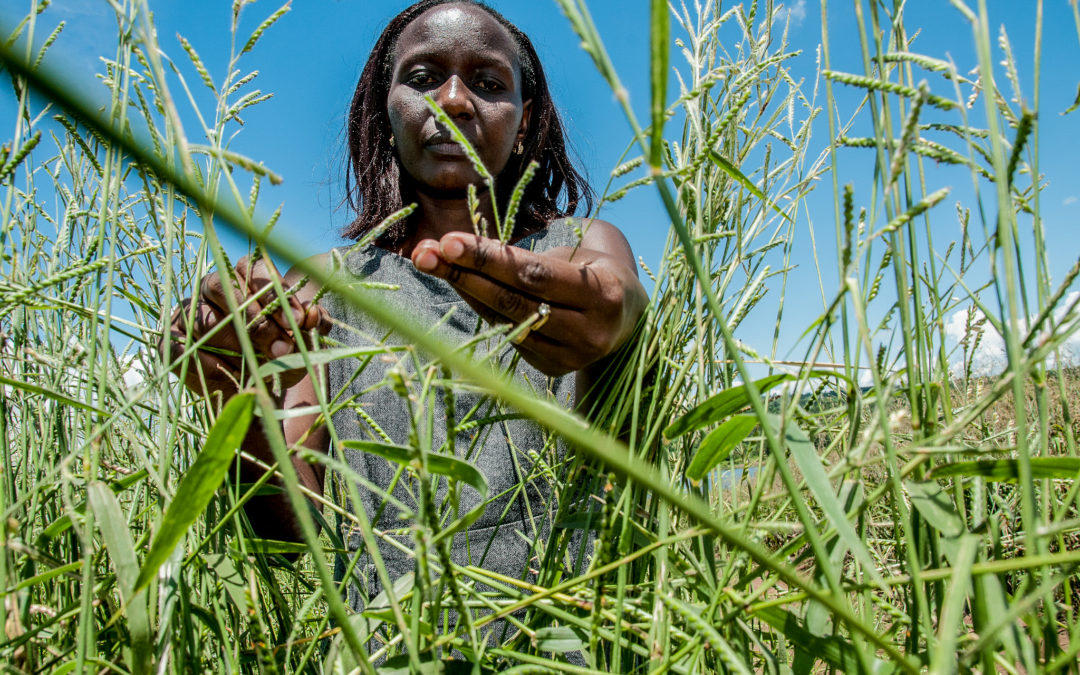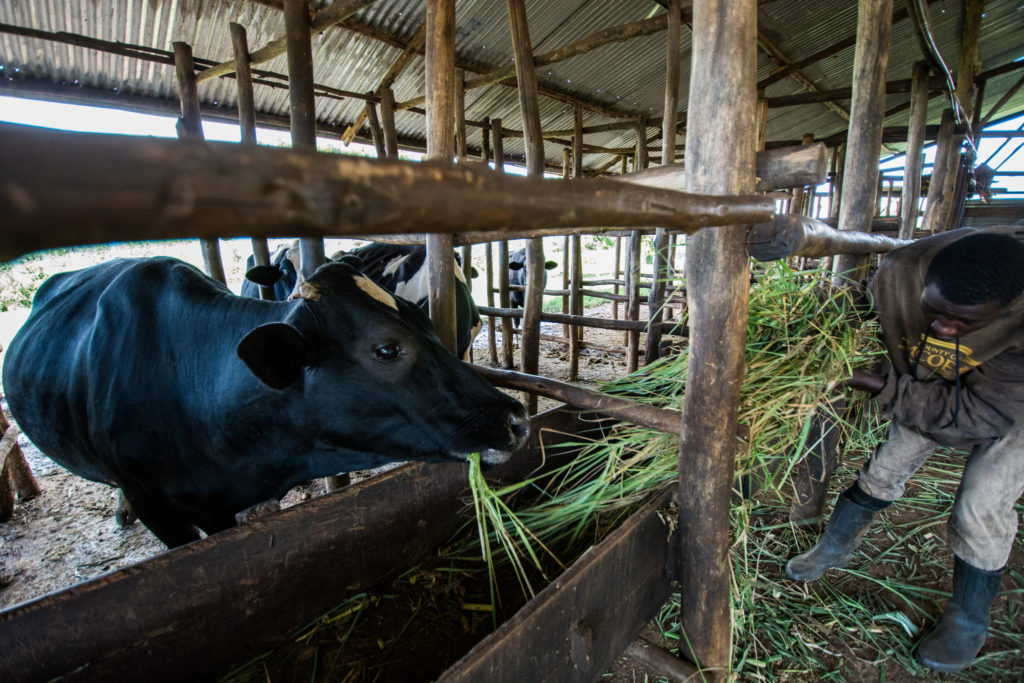No compromise: food security and carbon hoofprints

Sessions at this week’s Africa Agriculture Science Week this week (June 13-17) in Kigali included discussion on the potential of livestock forages to boost farm production and sequester carbon.
At night, Rwanda’s capital Kigali is a sparkling carpet of lights. Yet the tightly packed white beams throw light on a more serious circumstance facing the Rwandan government. Population pressure across the country.
Rwanda is among the most densely populated countries in the world. Projections show the population will double to 26 million by 2050. Farm plots are already among the smallest in sub-Sahara Africa – between 0.6 – 1.3 hectares on average, per household.
“With declining plot sizes, farmers face challenges to produce enough food for home consumption and surplus for income,” says Cyprian Ebong, an animal nutritionist and senior adviser to the Rwandan Agricultural Board (RAB).
“It’s not only food security which is at stake; but nutrition security too,” he says. Yet studies have shown that strategic investments in land reclamation, irrigation and intensification of arable and animal agriculture can make the country food secure.
Carbon hoofprints
Ambitious policies and programs aimed at boosting production the low-emission way have already been put in place – and livestock have a strategic role to play here, notes Ebong.
“We need to explore carbon trade-offs between food and feed, looking at what options increase food and feed production in a sustainable way – and simultaneously reduce livestock emissions,” he says.
An important challenge for Rwandan farmers is the amount of quality feed available, especially in the dry season. If animals don’t get the right feed, milk yields drop, meat production is low, and methane emissions – a greenhouse gas (GHG) 24 times more potent than carbon dioxide – are high.
That’s because feed quality also governs methane emissions from enteric fermentation – the digestive process. “There are often trade-offs farmers have to make between environmental health and food security,” says Ebong.
Getting to the trough of the matter
To assist decision makers and farmers to weigh up such trade-offs, a team from RAB, the International Center for Tropical Agriculture (CIAT), the University of Princeton, and CSIRO are quantifying the impact of intensification programs, focusing on tropical forages.
Olive Umunezero, an animal nutrition scientist at RAB, explains that her team is gathering data from more than 80 households across different farming systems, to assess food and feed availability, income, soil nutrient balances and GHG emissions.
Working with farmers scattered across the country, the research team follows farmers and livestock twice a month, to find out what they are being fed, and to calculate emissions. “We measure everything that goes into the feed troughs and check the type of forage,” she says.
“Every three months, we get district level data which we analyze,” notes Olive. “We check livestock weights and feeding practice to find out what the animals require to deliver expected amounts of milk or meat, and how much methane is emitted.”
The data are put into different models, designed to help farmers cut costs, while maximizing production in available space. “One farmer could be advised to reduce the number of cows and increase goats instead, based on the amount of feed available on his farm,” says Olive.

Researchers are also calculating the amount of carbon that could be stored thought other farm components, like trees.
Building on good genetics
At the green 40-hectare Karama research station, Rwanda’s national forage genebank, Olive checks a healthy crop of Brachiaria hybrid. The station stocks a diverse range of forage species and cultivars – a vital stock of high-quality genetic material safeguarding farmers against risk.
Just as well. Napier grass, for example, is being wiped out by Napier stunt and smut disease – now it can be replaced with tolerant alternatives. The germplasm, sourced from CIAT’s genebank and regional national programs, can be utilized to combat different problems.
“Some forages are better than others, because they grow back faster,” she explains. “Others produce higher quantities in a smaller space. Some are better in waterlogged soils – important in swamp areas; some do better in cold weather or are tolerant to specific diseases.” she says.
Others, like Brachiaria, have deep rooting systems that increase soil carbon sequestration. In fact, matching the right forages with environmental conditions is “a balancing act,” explains CIAT’s forage agronomist Solomon Mwendia.
This working paper outlines options for integrating forages in Rwandan cropping systems to increase forage production. In the meantime, the research team is weighing up trade-offs so that Rwanda’s farmers can lower their carbon footprint without lowering their production. Farmers can’t compromise on that.
This work was supported by the Norwegian Agency for Development Cooperation (NORAD) for “The Agricultural Synergies Project” through a sub-grant from Princeton University to Rwanda Agriculture Board (RAB) and International Center for Tropical Agriculture (CIAT). It was further supported by the CGIAR Research Programs on Humidtropics and Climate Change, Agriculture and Food Security (CCAFS).
Get involved:
- Explore forage niches in smallholder landscapes through on-farm system agronomy trials to maximize livestock fodder production under land scarcity
- Conduct detailed whole farm trade-off analyses for farms that are being monitored to explore the potential impacts of pasture intensification options
- Spatial targeting and upscaling of forage technologies to explore which country-wide impact could be made through improved forages

